![<em>The concept of Nature</em> (Whitehead 1971 [1919]) <em>The concept of Nature</em> (Whitehead 1971 [1919])](https://www.laspa.slg.br/wp-content/uploads/2021/04/whitehead_capa-651x1024.jpg)
The concept of Nature (Whitehead 1971 [1919])
WHITEHEAD, Alfred N. 1971. The concept of Nature. Cambridge: Cambridge University Press. [1919]
EVENTOS ORIGINAM TEMPO e ESPAÇO:
These two facts, namely the passage of events and the extension of events over each other, are in my opinion the qualities from which time and space originate as abstractions. (Whitehead 1971:34)
SIMULTANEIDADE e DURAÇÃO
Simultaneity is the property of a group of natural elements which in some sense are components of a duration. A duration can be all nature present as the immediate fact posited by sense-awareness. A duration retains within itself the passage of nature. There are within it antecedents and consequents which are also durations which may be the complete specious presents of quicker consciousness. In other words a duration retains temporal thickness. Any concept of all nature as immediately known is always a concept of some duration though it may be enlarged in its temporal thickness beyond the possible specious present of any being known to us as existing within nature. Thus simultaneity is an ultimate factor in nature, immediate for sense-awareness. (Whitehead 1971:56)
O PRESENTE:
What we perceive as present is the vivid fringe of memory tinged with anticipation. (Whitehead 1971:73)
O EVENTO (unidade de análise):
We perceive one unit factor in nature; and this factor is that something is going on then-there. […] It is this unit factor, retaining in itself the passage of nature, which is the primary concrete element discriminated in nature. These primary factors are what I mean by events. (Whitehead 1971:75)
Wherever and whenever something is going on, there is an event. (Whitehead 1971:78)
PARTICULA-EVENTO:
I will therefore use the name ‘event-particles’ for the ideal minimum limits to events. (Whitehead 1971:86)
[C]onsider a point of the instantaneous space which we conceive as apparent to us in an almost instantaneous glance. This point is an event-particle. (Whitehead 1971:89)
A DUPLA ORIGEM da SIMPLICIDADE PECULIAR do PONTO INSTANTÂNEO (sem partes e sem magnitude):
The peculiar simplicity of an instantaneous point has a twofold origin, one connected with position, that is to say with its character as a punct, and the other connected with its character as an event-particle. The simplicity of the punct arises from its indivisibility by a moment. […] The simplicity of an event-particle arises from the indivisibility of its intrinsic character. The intrinsic character of an event-particle is indivisible in the sense that every abstractive set covered by it exhibits the same intrinsic character. […] These two characters of simplicity enjoyed […] by event-particles and puncts define a meaning for Euclid´s phrase, ‘without parts and without magnitude.’ (Whitehead 1971:94)
SIMPLICIDADE e o EVENTO-PARTÍCULA (abstração epistemológica):
[W]hen we seek definitely to express the relations of events which arise from their spatio-temporal structure, we approximate to simplicity by progressibely diminishing the extent (both temporal and spatial) of the events considered. […] Thus we finally reach the ideal of an event so restricted in its extension as to be without extension in space or extension in time. Such an event is a mere spatial point-flash of instantaneous duration. I call such an ideal event an ‘event-particle’. […] [E]vent-particles are abstractions in their relations to the more concrete events. But then by this time you will have comprehended that you cannot analyse concrete nature without abstracting. (Whitehead 1971:172-3)
EVENTO-PARTÍCULA como o IDEAL DE ACUIDADE E DE SIMPLICIDADE e a TEORIA DA RELATIVIDADE: (Whitehead 1971:173)
QUARTA DIMENSÃO:
The totality of event-particles will form a four-dimensional manifold, the extra dimension arising from time – in other words – arising from the points of a timeless space being each a class of event-particles. (Whitehead 1971:86)
SIMPLICIDADE (o alvo traiçoeiro do filósofo natural):
The guiding motto in the life of every natural philosopher should be, Seek simplicity and distrust it. (Whitehead 1971:163)
EINSTEIN:
There is a general agreement that Einstein’s investigations have one fundamental merit irrespective of any criticisms which we may feel inclined to pass on them. They have made us think. (Whitehead 1971:164)
EXPLICAÇÃO CIENTÍFICA:
In natural science ‘to explain’ means merely to discover ‘interconnexions’. (Whitehead 1971:97)
RECOGNIÇÃO PERCEPTIVA, COMPARAÇÃO INTELECTUAL, OBJETOS e O CARÁTER DE UM EVENTO:
Whatever passes is an event. But we find entities in nature which do not pass; namely we recognise samenesses in nature. (Whitehead 1971:124)
In perception we recognise. […] Recognition is not primarily an intellectual act of comparison; it is in its essence merely sense-awareness in its capacity of positing before us factors in nature which do not pass. […] Factors in nature which are without passage will be called objects. (Whitehead 1971:124-5)
Recognition is reflected into the intellect as comparison. The recognised objects of one event are compared with the recognised objects of another event. The comparison may be between two events in the present, or it may be between two events of which one is posited by memory-awareness and the other by immediate sense-awareness. But it is not the events which are compared. For each event is essentially unique and incomparable. What are compared are the objects and relations of objects situated in events. (Whitehead 1971:125)
The event considered as a relation between objects has lost its passage and in this aspect is itself an object. This object is not the event but only an intellectual abstraction. The same object can be situated in many events; and in this sense even the whole event, viewed as an object, can recur, though not the very event itself with its passage and its relations to other events. (Whitehead 1971:125)
Objects are elements in nature which do not pass. The awareness of an object as some factor not sharing in the passage of nature is what I call ‘recognition’. It is impossible to recognise an event, because an event is essentially distinct from every other event. Recognition is an awareness of sameness. […] I use recognition for the non-intellectual relation of sense-awareness which connects the mind with a factor of nature without passage. On the intellectual side of the mind’s experience there are comparisons of things recognised and consequent judgments of sameness or diversity. […] I am quite willing to believe that recognition, in my sense of the term, is merely an ideal limit, and that there is in fact no recognition without intellectual accompaniments of comparison and judgment. But recognition is that relation of the mind to nature which provides the material for the intellectual activity. (Whitehead 1971:143)
An object is an ingredient in the character of some event. In fact the character of an event is nothing but the objects which are ingredient in it and the ways in which those objects make their ingression into the event. Thus the theory of objects is the theory of the comparison of events. Events are only comparable because they body forth permanences. We are comparing objects in events whenever we can say. ‘There it is again.’ Objects are the elements in nature which can ‘be again.’ (Whitehead 1971:143-4)
The ingression of an object into an event is the way the character of the event shapes itself in virtue of the being of the object. Namely the event is what it is, because the object is what it is; and when I am thinking of this modification of the event by the object, I call the relation between the two ‘the ingression of the object into the event.’ It is equally true to say that objects are what they are because events are what they are. Nature is such that there can be no events and no objects without the ingression of objects into events. (Whitehead 1971:144)
You cannot recognise an event; because when it is gone, it is gone. You may observe another event of analogous character, but the actual chunk of the life of nature is inseparable from its unique occurrence. But a character of an event can be recognised. […] Things which we thus recognise I call objects. An object is situated in those events or in that stream of events of which it expresses the character. (Whitehead 1971:169)
CONGRUÊNCIA TEMPORAL:
King Alfred the Great was ignorant of the laws of motion, but knew very well what he meant by the measurement of time, and achieved his purpose by means of burning candles. […] Uniformity in change is directly perceived, and it follows that mankind perceives in nature factors from which a theory of temporal congruence can be formed. (Whitehead 1971:137)
OBJETOS SENSORIAIS, OBJETOS PERCEPTIVOS e OBJETOS CIENTÍFICOS:
These three types [sense-objects, perceptual objects and scientific objects] form an ascending hierarchy, of which each member presupposes the type below. (Whitehead 1971:149)
The base of the hierarchy is formed by the sense-objects. These objects do not presuppose any other type of objects. A sense-object is a factor of nature posited by sense-awareness which (i), in that it is an object, does not share in the passage of nature and (ii) is not a relation between other factors of nature. It will of course be a relatum in relations which also implicate other factors of nature. But it is always a relatum and never the relation itself. Examples of sense-objects are a particular sort of colour, say Cambridge blue, or a particular sort of sound, or a particular sort of smell, or a particular sort of feeling. (Whitehead 1971:149)
When we look at a coat, we do not in general say, There is a patch of Cambridge blue; what naturally occurs to us is, There is a coat. […] What we perceive is an object other than a mere sense-object. It is not a mere patch of colour, but something more; and it is that something more which we judge to be a coat. […] The coat which is perceived – in the sense of the word ‘coat’ – is what I call a perceptual object. […] The perceptual object is not primarily the issue of a judgment. It is a factor of nature directly posited in sense-awareness. The element of judgment comes in when we proceed to classify the partticular perceptual object. […] The perceptual object is the outcome of the habit of experience. A sense-objetc [perceptual object?] is not the porduct of the association of intellectual ideas; it is the product of the association of sense-objects in the same situation. (Whitehead 1971:153-5)
A scientific object such as a definite electron is a systematic correlation of the characters of all events throughout all nature. It is an aspect of the systematic character of nature. The electron is not merely where its charge is. The charge is que quantitative character of certain events due to the ingression of the electron into nature. The electron is its whole field of force. Namely the electron is the systematic way in which all events are modified as the expression of its ingression. (Whitehead 1971:158-9)
A SOBREDETERMINAÇÃO DOS OBJETOS CIENTÍFICOS (campos de atividade):
[I]n science we have found out that when we know all about the adventures amid events of material physical objects and of scientific objects we have most of the relevant information which will enable us to predict the conditions under which we shall perceive sense-objects in specific situations. […] [T]hus, to a large extent, the appearance of sense-objects is conditioned by the adventures of material objects. The analysis of these adventures makes us aware of another character of events, namely their characters as fields of activity which determine the subsequent events to which they will pass on the objects situated in them. We express these fields of activity in terms of gravitational, electromagnetic, or chemical forces and attractions. (Whitehead 1971:170)
OBJETOS UNIFORMES e NÃO-UNIFORMES:
It is not every object which can be located in a moment. An object which can be located in every moment of some duration will be called a ‘uniform’ object throughout that duration. Ordinary physical objects appear to us to be uniform objects, and we habitually assume that scientific objets such as electrons are uniform. But some sense-objects certainly are not uniform. A tune is an example of a non-uniform object. We have perceived it as a whole in a certain duration; but the tune as a tune is not at any moment of that duration though one of the individual notes may be located there. (Whitehead 1971:162)
A ESPECIFICAÇÃO DE UM EVENTO (momento, local e caráter):
In order to specify an observed event, the place, the time, and character of the event are necessary. (Whitehead 1971:165)
NATUREZA como ESTRUTURA DE EVENTOS:
Nature is known to us in our experience as a complex of passing events. In this complex we discern definite mutual relations between component events, which we may call their relative positions, and these positions we express partly in terms of space and partly in terms of time. Also in addition to its mere relative position to other events, each particular event has its own peculiar character. In other words, nature is a structure of events and each event has its position in this structure and its own peculiar character or quality. (Whitehead 1971:166)
[T]he concrete facts of nature are events exhibiting a certain structure in their mutual relations and certain characters of their own. The aim of science is to express the relations between their characters in terms of the mutual structural relations between the events thus characterised. The mutual structural relations between events are both spatial and temporal. (Whitehead 1971:167-8)
TEMPO, ESPAÇO e EVENTO:
By saying that space and time are abstractions, I do not meand that they do not express for us real facts about nature. What I mean is that there are no spatial facts or temporal facts apart from physical nature, namely that space and time are merely ways of expressing certain truths about the relations between events. (Whitehead 1971:168)
EVOLUÇÃO CRIADORA =/= SÉRIE TEMPORAL: (Whitehead 1971:178)
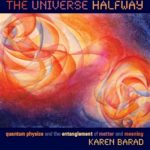
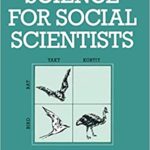
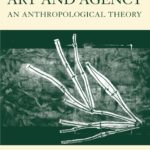
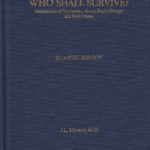
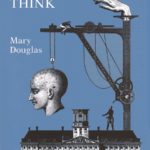
 LaSPA is located at the Institute of Philosophy and Human Sciences (
LaSPA is located at the Institute of Philosophy and Human Sciences (